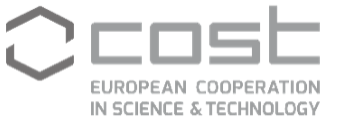WG3: Integration of other energy sources (M1 to M48)
Leader: Lazaros Aresti (CY)
Co-leader: Fleur Loveridge (UK)
The activities of WG3 will be dedicated to knowledge improvement on the integration of geothermal energy with other renewables, by exploiting a highly multidisciplinary WG. One of the main objectives of WG3 is to promote high market penetration of EGS, through hybridisation with other renewable energy sources for heating/cooling and/or large-scale systems. To this end, the possibility of increasing share in the building renovation market will be considered. To achieve solutions that are more reliable in terms of performance, less disruptive for the occupants, more convenient and more environmentally friendly, it is crucial to identify current technical solution for hybridisation, their limits and potentiality in real applications, and the integrated design issues from a single EGS to the building and to a city-scale).
The objectives of WG3, leading to the tasks described below, are:
- Delineate best practices to promote the use of EGS integrated with other renewables.
- Provide practical documents for practitioners to help in selecting solutions that are more reliable in terms of performance, more convenient and more environmentally friendly, depending on the installation site characteristics.
The objective of task T3-1 is to better understand the response of coupled technologies, where there is an integration of closed-loop ground heat exchangers in geotechnical structures with other renewable energy-based systems, such as solar collectors or mini wind turbines. This can lead to interesting applications such as Underground Thermal Energy storages (UTES). This integration can be exploited to create an efficient district heating system based on renewable energies for the housing development, alternative to the classic fossil fuel with negative environmental impacts. A necessary step for demonstrating the attractiveness of such systems based on integrated renewable technologies to all relevant stakeholders is to develop practical documents highlighting the advantages and potentialities, as well as difficulties and limits of implementations.
Energy storage systems, which allow for optimisation and flexible consumption, play a crucial role in a cost-effective application resulting in high energy performance. In most of the possible configurations, the thermal and mechanical response of a UTES interacting with other renewables is strongly influenced by the complex thermo-hydro-mechanical (THM) behaviour of the surrounding soils. The objective of Task T3-2 is to conduct a critical assessment of the different storage methods concerning the specific ground conditions and the coupling with EGS. Developed numerical simulation tools will be used for selecting and optimising the storage design for different soil types and European climatic conditions, in order to provide the designers with reliable indications on the design of the integrated system.
Large-scale implementation of EGS can be achieved with the development of new Smart Thermal Grids or by enhancing the extension potential of existing ones). Task T3-3 aims to develop tools that promote sustainable, local and flexible systems for DHC. The geothermal map for ground temperature, the modelling of EGS impact on geothermal reservoir behaviour and best practices for a proper and efficient urban planning of geothermal systems will be developed. Subsequently, the optimum location for future installations and for improving the integration of existing DHC networks will be evaluated. Also, methods to minimise interferences with existing installations will be investigated.
Deliverables WG3
- D3.1 - Journal Papers for dissemination results #1 ( 18 month )
- D3.2 - Technical Guidelines for the design of integrated renewable energy systems ( 36 month )
- D3.3 - Journal Papers for dissemination results #2 ( 18 month )
- D3.4 - Good practice book for UTES ( 36 month )
- D3.5 - Journal Papers for dissemination results #3 ( 36 month )
- D3.6 - Recommendations for the implementation of EGS through Smart Thermal Grids ( 48 month )


